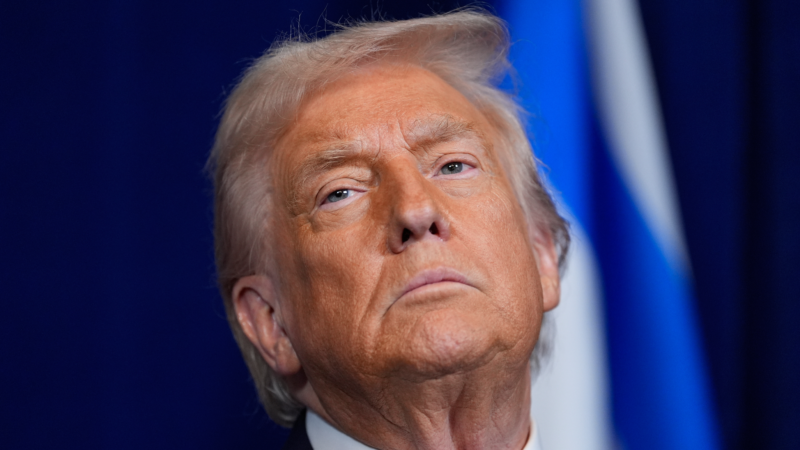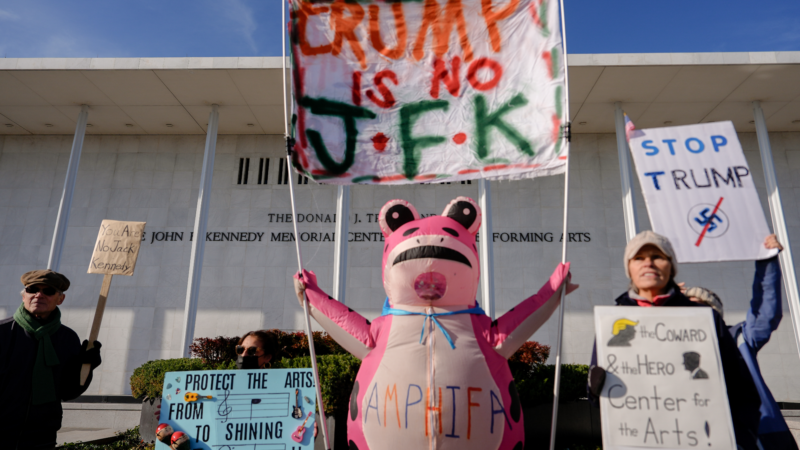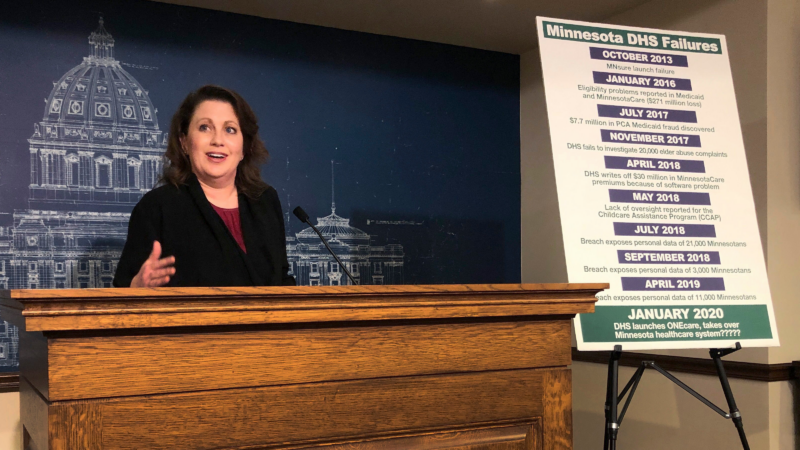With steel tariffs doubling today, a North Carolina manufacturer wonders how to compete
President Trump is doubling down on steel and aluminum tariffs.
Starting today, the tax on imported metals is set to jump to 50%, twice what it was yesterday.
The president announced the latest trade war offensive Friday, while visiting a US Steel plant outside Pittsburgh. Trump told a crowd of hard-hat wearing steelworkers that a super-sized tax would help keep cheap, imported steel out of the U.S. market.
“[It] will even further secure the steel industry in the United States,” Trump said. “Nobody is going to get around that.”
Many more people work in companies that use steel than make it
The higher tariffs likely will provide a boost for domestic companies that produce steel and aluminum. But for every steelworker in America, there are about 80 people working for companies that use steel. And their costs are about to go up.
“How is it that you’re supposed to buy the most expensive steel in world in the United States, and compete with global competitors who have access to world market pricing,” asked H.O. Woltz, who runs a company in Mount Airy, N.C. that twists steel wire into cables used to reinforce concrete.
During the first Trump administration, Woltz’s company was doubly squeezed — paying more for raw steel while competing with finished products from other countries that didn’t face a tariff.
This time around, the Trump administration is taxing some of those finished products as well. Still, Woltz worries the higher cost of building materials might put some construction projects on hold.
From auto parts to machinery, many businesses use steel
And that’s just the beginning of the tariffs’ potential fallout, which affects many other industries.
“The ripple effects go into auto parts, motorcycles, machinery and equipment that we use in mining — many, many different products,” says Katheryn Russ, an economist at the University of California, Davis, who studied the effect of steel tariffs during the first Trump administration.
Researchers estimated then that rising steel and aluminum costs resulted in the loss of tens of thousands of downstream manufacturing jobs.
“When there’s a tariff on steel, that can drive up the cost for producers who use steel as an input to make other stuff. And that can prompt them to pull back on hiring,” Russ says.
‘It’s a lose-lose for American consumers’
Today’s tariffs, which are higher and more far-reaching, could also show up in higher prices at the supermarket, for everything from canned soup to a six-pack of soda pop.
“We know that we as can-makers pass these increases on to our customers—the food producers and soft-drink makers and the beer brewers—and they’ll pass that on to the consumer as well,” says Robert Budway, president of the Can Manufacturers Institute. “It’s a lose-lose for American consumers.”
In raising the steel and aluminum tariffs, Trump did not rely on the 1977 emergency statute he’s used for many other tariffs, which are the subject of an ongoing court battle. Instead, he cited the authority of a different statue — Section 232 of the Trade Expansion Act of 1962 — which is designed to protect national security.
There are factory owners who are bullish about Trump’s trade policies even if it costs them. Drew Greenblatt’s company makes wire baskets and other steel products at plants in Michigan, Indiana and Maryland — and he’s looking to buy a fourth factory in New Jersey. While steel tariffs have increased his raw material costs, Greenblatt says he’s not worried about it.
“Our foreign competitors are either going to have to build a factory in America, or they’re going to have to start buying from guys like me,” Greenblatt says. “So what’s going to happen is you’re going to see is a tremendous increase in American manufacturing.”
“It makes planning super difficult”
Many forecasters disagree, warning that Trump’s overall trade war is likely to lead to slower economic growth and businesses fear the same.
“You can build all the walls and implement all the tariffs that you want to, but at a point, you don’t get away from the fact that the Chinese are driving this whole world market,” says Woltz, the North Carolina manufacturer.
While Trump’s overall trade agenda is supposed to promote domestic manufacturing, a survey released this week showed factory orders and output being dragged down by tariffs and the often unpredictable way they’ve been rolled out.
“Maybe Trump wakes up tomorrow and changes his mind,” Woltz says grimly. “It makes planning super difficult.”
National Guard arrives in New Orleans for 1st New Year’s since Bourbon Street attack
Nearly a year after a New Year's Day truck attack on Bourbon Street left 14 dead, New Orleans officials are still seeking permanent security solutions.
National Guard arrives in New Orleans for 1st New Year’s since Bourbon Street attack
Nearly a year after a New Year's Day truck attack on Bourbon Street left 14 dead, New Orleans officials are still seeking permanent security solutions.
Isiah Whitlock Jr., actor from ‘The Wire,’ ‘Veep’ and Spike Lee films, dies at 71
Actor Isiah Whitlock Jr. has died at age 71. Whitlock played the corrupt state Sen. Clay Davis on "The Wire." He also appeared in several Spike Lee films, including "25th Hour" and "BlacKkKlansman."
CIA behind strike at Venezuelan dock that Trump claims was used by drug smugglers, AP sources say
The CIA was behind a drone strike last week at a docking area believed to have been used by Venezuelan drug cartels. That's according to two people familiar with details of the operation.
Kennedy Center renaming prompts a new round of cancellations
The Kennedy Center is ending the year with a new round of artists saying they are canceling scheduled performances after President Donald Trump's name was added to the facility.
Trump administration says it’s freezing child care funds to Minnesota
President Trump's administration announced that it's freezing child care funds to Minnesota after a series of fraud schemes in recent years.









